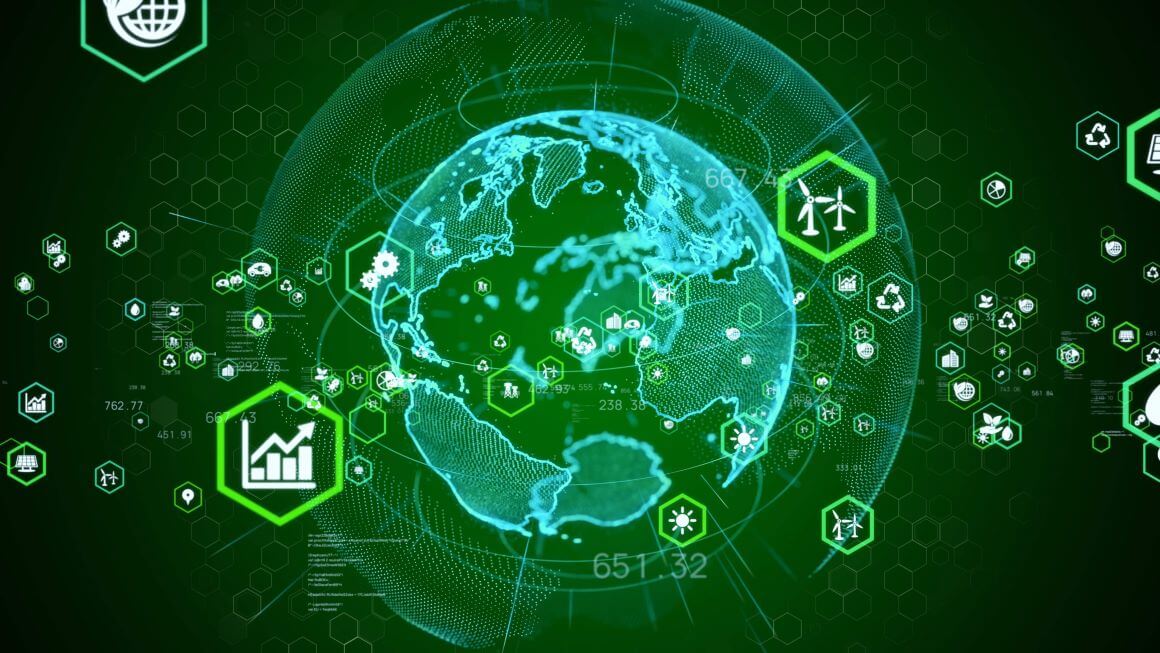
Legislators and consumers alike are pressuring businesses to go green, and many companies are answering the call. Sustainability is one of many concerns data center owners must consider, but it’s increasingly becoming a focal point. Data center owners want to do their part to create a more sustainable future, and that means going green with data.
The Trend Toward Green Data Centers
It’s no secret that data centers consume a tremendous amount of power and pose sustainability concerns. In 2021, data centers were found to be responsible for 2 percent of the world’s CO2 emissions. This is equivalent to the entire global airline industry.
Computing demands are only increasing, so data centers are working to meet the demand while keeping their power consumption as low as possible. Some hyperscalers have made headlines with strong commitments to going green. For example, Google has pledged to operate on only carbon-free energy by 2030, and Amazon Web Services has committed to using 100 percent renewable energy by 2025.
This effort to go green is also spurred on by stringent government regulations that require data centers to monitor and curb their environmental impact.
Overall, the global green data center market is expected to grow at a compound annual growth rate (CAGR) of around 22 percent during 2021-26. Hence, the trend toward sustainability is worth embracing for data centers of all types and sizes.
Sustainability Strategies for Data Centers
Do you want to help make your data center more eco friendly? Here are five practical tactics you can employ:
1. Opt for energy-efficient servers.
For hyperscale data centers containing thousands of servers, even a slight improvement in energy efficiency can add up to a substantial decrease in overall power consumption. Whether you are outfitting a new data center with IT infrastructure or upgrading the hardware in an existing facility, opt for energy-efficient servers.
2. Optimize your cooling system.
Cooling is essential in a data center, but cooling systems can consume a great deal of energy. On the positive side, that means improving the energy efficiency of your cooling system is a major step in a positive direction. For example, by optimizing airflow and reconfiguring computer room air conditioning (CRAC) units, Fujitsu achieved a 48 percent reduction in energy consumption.
One of the most eco-friendly solutions begins in the site selection process. By building in a cooler climate and utilizing renewabling resources, you can gain power efficiency and water conservation. Take advantage of what’s available in a particular location by using a free air cooling system.
3. Run some generators on renewable energy.
Going green doesn’t need to be an all-or-nothing endeavor. The mindset that it needs to be a large and sudden change can prevent some from taking positive steps toward sustainability. For instance, you can keep some of the diesel generators you rely on for backup power, but why not convert some of your backup power to a renewable energy source, such as solar? The term “green data” refers specifically to data generated from renewable energy, so this is a great option for embracing the green data trend.
4. Recycle retired infrastructure to minimize e-waste.
What happens to old hardware when it gets replaced? The answer is another important aspect of a data center’s environmental impact. In a 2020 survey, over a quarter of data center operators said they disposed of hardware without recycling. If you’re intimidated by the prospect of recycling in-house, consider partnering with a certified electronics recycling company that can help you meet your sustainability goals.
5. Choose modular data centers.
Building a new data center or expanding your capacity? Consider choosing a modular design and construction. Modular data centers tend to be more environmentally friendly than stick-built data centers. That’s because they offer:
- An energy-efficient and compact design, leading to reduced emissions.
- A scalable capacity to minimize wasted energy and costs.
- An optimized construction process that minimizes waste.
In short, modular data centers are designed for efficiency in terms of energy consumption, cost and space. These are all advantages to data center owners, so you don’t have to sacrifice one goal to prioritize sustainability.
Make the Move to Green Data
The move toward green data is likely to progress as the demand for computing power and the focus on sustainability continue to escalate. Fortunately, there are several strategies data centers can employ to put their sustainability goals into action, from the design and construction phase to end-of-life procedures for hardware.
Want to learn more about the state of the industry? Check out our Key Takeaways from CBRE's 2021 Data Center Predictions and the Impact on Colocation.


Comments